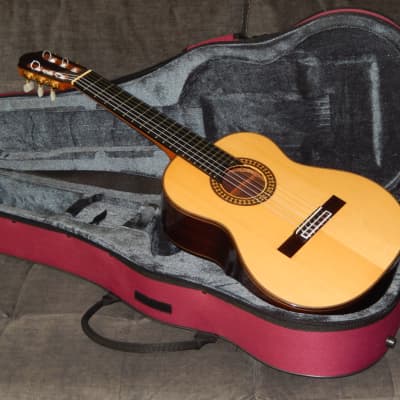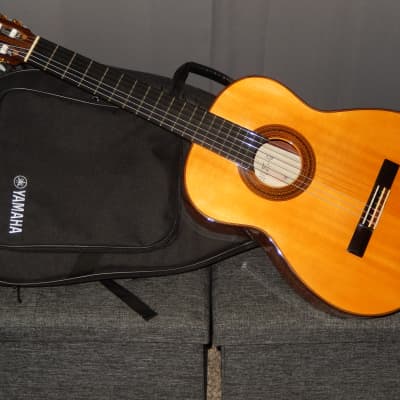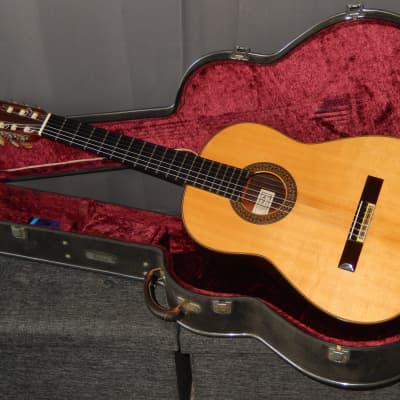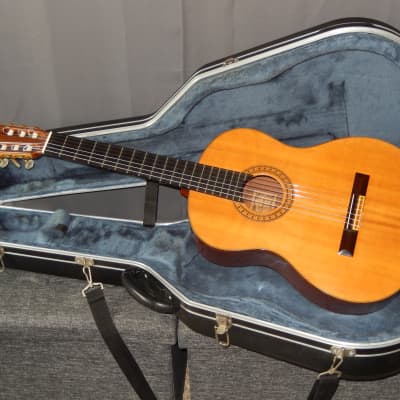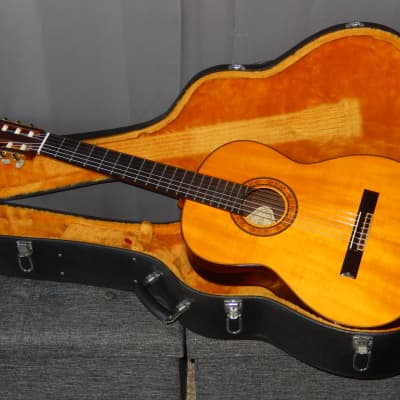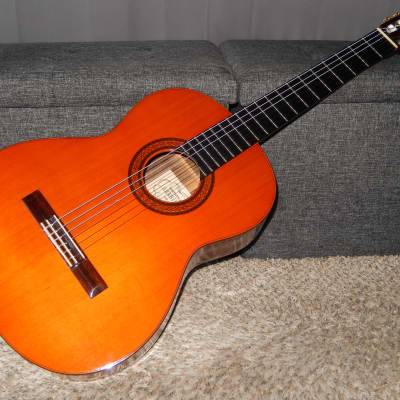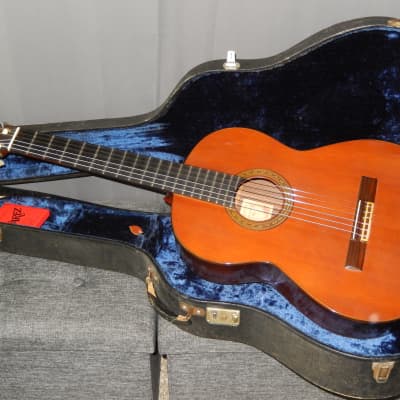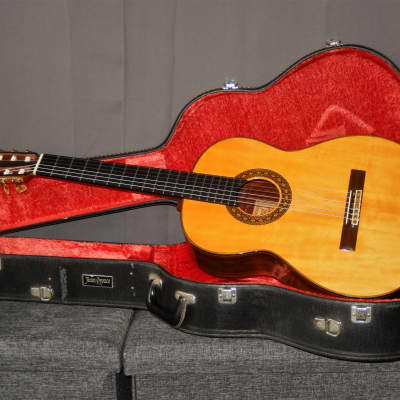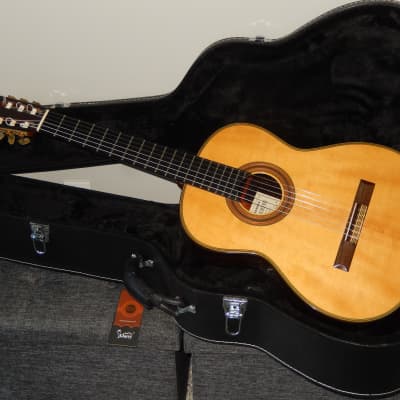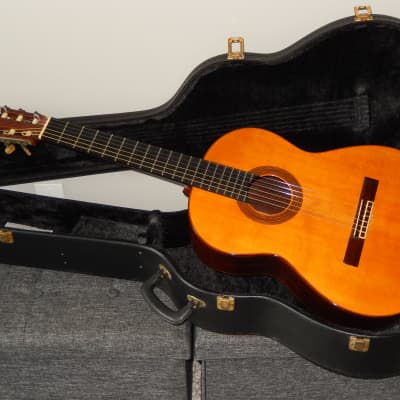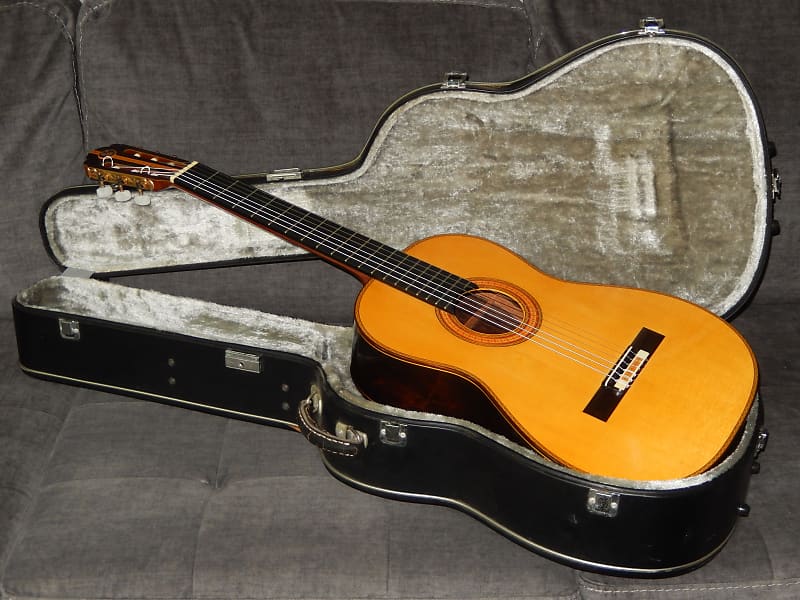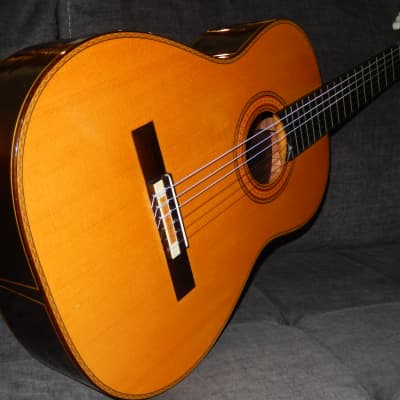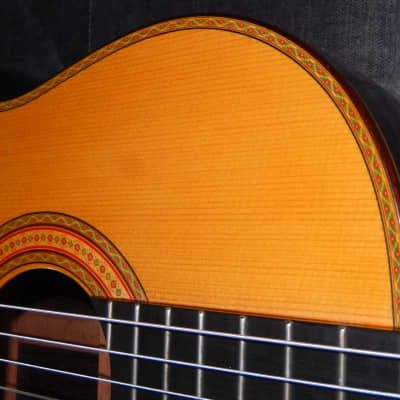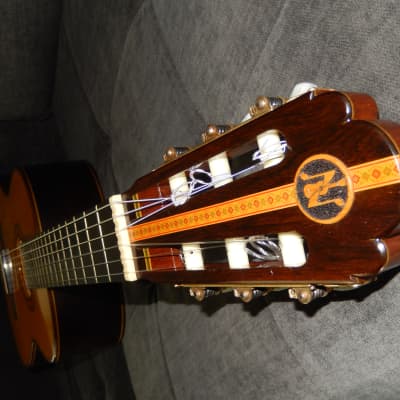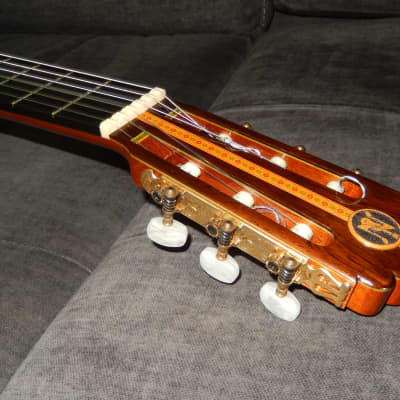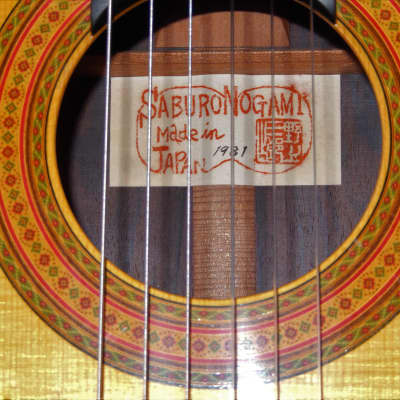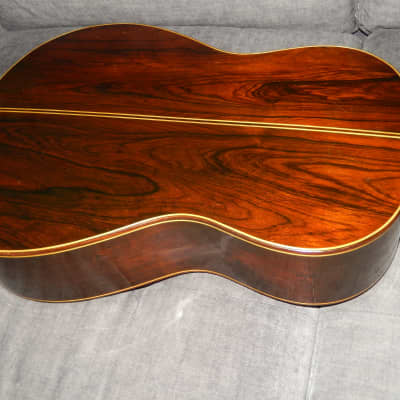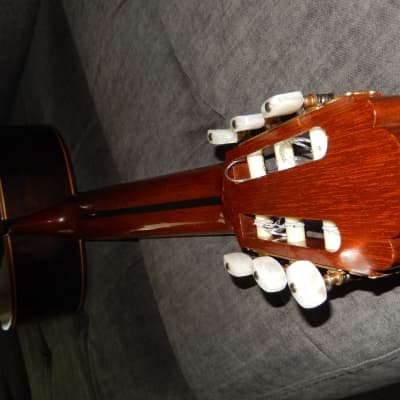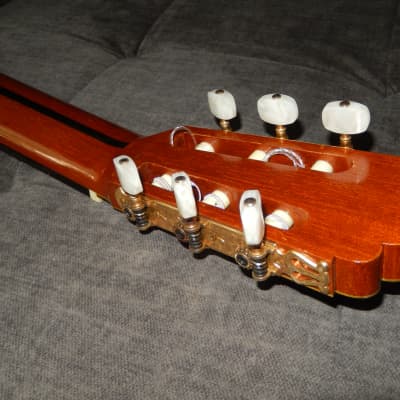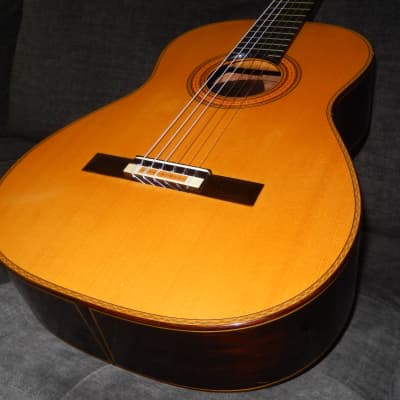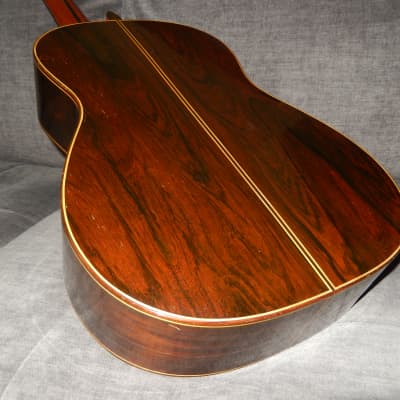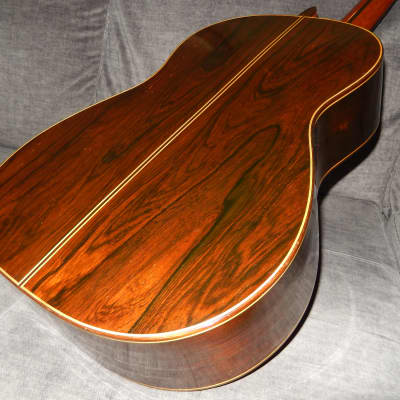Saburo Nogami “Niibori Custom” 1981
This guitar was ordered by Niibori Music Academy and made in 1981 by legendary Japanese luthier Saburo Nogami. Its body outline, dimensions and headstock closely resemble Antonio de Torres guitars. Its bracing is certainly more advanced than original Torres bracing. Beyond any doubt, this instrument belongs to class of "heavenly guitars".
Saburo Nogami's long time cooperation with Nibori School of Guitar Ensamble (later renamed to Nibori Music Academy) started in mid1970s.
Saburo Nogami was the first ever apprentice at Masaru Kohno workshop. He joined Kohno in 1959 and left his workshop in early 1970s. Saburo Nogami's level of craftsmanship was at least equal to Kohno's and he soon became a luthier legend on his own. During his long career besides making regular classical guitars he was also making alto, bass & contrabass guitars, lutes, vihuelas, and many traditional Japanese string instruments. Many of these "exotic" instruments were greatly decorated with carvings and paintings and made as "only one of its kind", hence their labels don’t bear any model numbers. Saburo Nogami's guitars and all other instruments are rather hard to find and highly priced not only in Japan.
Saburo Nogami however was deeply engaged in making guitars for average "boy and girl". In mid 1970s Saburo supervised production of several guitar models for Zen-On Music Co. Many other instruments were labelled for Niibori School of Guitar Ensemble, some labelled for Nishin Kogyo co. (trading company). Great majority of these guitars were made with "laminated" b/s. Laminated is quite "unfortunate" term regarding Japanese made guitars. These "laminates" were made from 2 layers of solid wood glued together with natural resins. They were made so well that they performed as good as solid woods while being far less expensive in guitar production. Since late 1970s through late 1990s Saburo Nogami was closely cooperating with Kazuo Yairi, supervising production of many Kazuo Yairi's models at Yairi's Gifu factory. Yet again most of these absolutely wonderful instruments were made with "laminated" b/s.
This guitar has 650 mm scale and 52 mm nut width, while its body is somewhat smaller than most classical guitars.
It remains in overall very good cosmetic and structural condition. Sometime in the past, its top has undergone spot refinishing associated with removal of few older scratches. Few very small dents and scratches must have been produced after the repair. Although one can find some other minor cosmetic flaws on the back and sides, this is still very beautiful guitar. Its sound is simply heavenly.
By comparing volume/tonality of this guitar with top Kohno, Sakazo & Toshihiko Nakade and Yamaha models of that era, I am sure that this highest class, highly ornamented instrument was priced minimum 400 000 yen, if not 500 000 yen. In 1981starting yearly salary of Japanese college grade was around 100 000 yen.
Despite its smaller body this guitar is very powerful. This immense volume is combined with superb level of note clarity and separation. Its basses are deep and rich with overtones, yet quite clean. Its trebles are very sweet, clear yet with their own overtones. All notes are magnified by very extended sustain.
If you’d like to purchase brand new Spanish made guitar of the same class, you need to have at least $15000 in your wallet.
Specifications:
Total length: 980 mm
Body length: 480 mm
Body depth: 95-98 mm
Upper bout width: 265 mm
Lower bout width: 355 mm
Waist width: 230 mm
Top: AAA Grade Solid Spruce/very light lattice type bracing based on 7 braces fan/ shellac or very thin coat of cashew lacquer
Back & Sides: Solid Figured Brazilian Rosewood/shellac or very thin coat of cashew lacquer
Neck: Mahogany with Ebony reinforcement
Fingerboard: Ebony
Scale: 650 mm
Nut width: 52 mm
Its current action is set to 3.50 mm under E6 and 3.00 mm under E1, with practically no extra room on the saddle.
This guitar will be shipped in used original hard case in still very good condition.
Real Value of Japanese Vintage Guitars
The key to understand value of vintage Japanese guitars is to acknowledge galloping devaluation of Japanese yen in 1960s & 1970s. This devaluation was somewhat slower in 1980s. The best measure of this devaluation is Starting Yearly Salary of Japanese College Graduate (SYSJCG).
SYSJCG in 1965 was 19 600 yen, in 1969 – 34 600 yen, in 1970 39 200 yen, in 1972 – 62 300 yen, in 1975 79 200 yen, in 1977 86 200 and in 1980 - 100 000 yen.
During 1960s and most of 1970s model numbers of Japanese guitars were strictly interconnected with their prices in Japanese yen. In late 1970s and during following decades model numbers were no longer strictly associated with their prices. Many Japanese guitar makers introduced model names instead of model numbers. Others were still using model numbers with addition of letter abbreviations or other symbols.
The best and only logical approach while evaluating real value (real grade) of vintage Japanese guitar is to compare its price in Japanese yen with SYSJCG during the year guitar was made.
Any guitar priced 100 000 in 1970 (labelled usually as No10) would be priced 200 000 yen in 1975 (relabeled to No20 or 2000), 300 000 yen in 1977 (labelled as No3, No30 or 3000). Starting in 1977 Masaru Kohno introduced his new models No40 priced 400 000 yen and No50 priced 500 000 yen. By 1984 Kohno started using model names instead numbers and was raising their prices as he was pleased. Model 50 became model “Maestro”, model 40 became model “Special”, model 30 became model “Professional-J”. Naturally other Master luthiers were doing the same name/price changes.
Knowing all of that, you can bet on that Masaru Kohno No50 made in 1982 is practically the same grade instrument as Kohno No20 made in 1972, or Kohno no 30 made in 1976. Kohno No40 made in 1982 is exactly the same grade instruments as Kohno No15 made in 1972 or Kohno No20 made in 1975.

